
Introduction to Cassava Farming
October 1, 2023, 2:18 pm
Cassava (Manihot esculenta Crantz) is one of some 100 species of trees, shrubs and herbs of the genus Manihot, which is distributed from northern Argentina to the southern United States of America.
Introduction to Cassava Farming
While some studies indicate that cassavahas multiple centres of origin, others suggest that the cultivated species originated on the southern edge of the Brazilian Amazon.
Botanically, cassava is a woody perennial shrub, which grows from 1 m to 5 m in height. It is believed to have been cultivated, mainly forits starchy roots, for 9,000 years, making it one of agriculture’s oldest crops.
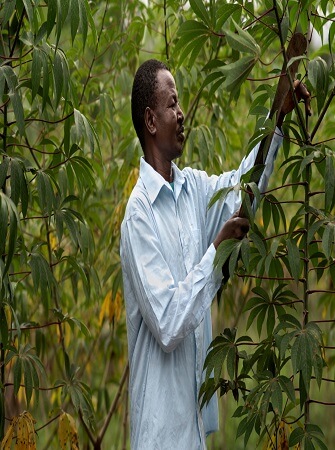
Since it is sensitive to frost and has a growing season of nearly one year, cassava is cultivated almost exclusively in tropical and subtropical regions. It is grown today by millions of small-scale farmers in more than 100 countries, from American Samoa to Zambia, under a variety of local names: mandioca in Brazil, yuca in Honduras, ketela pohon in Indonesia, mihogo in Kenya, akpu or fufu in Nigeria and sắn in Viet Nam.
Cassava Characteristics
Cassava has characteristics that make it highly attractive to smallholder farmers in isolated areas where soils are poor and rainfall is low or unpredictable. Because it is propagated from stem cuttings, planting material is low-cost and readily available. The plant is highly tolerant to acid soils, and has formed a symbiotic association with soil fungi that help its roots absorb phosphorus and micronutrients. To discourage herbivores, its leaves produce two glycosides which, when digested, produce highly toxic hydrogen cyanide.
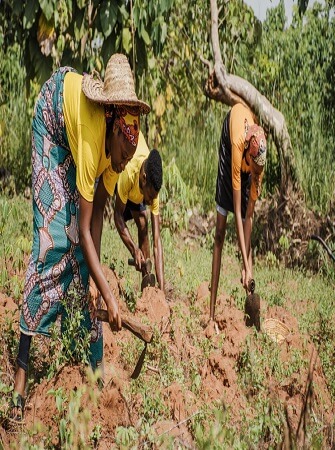
Since most of the soil of the plant, recycling the plant tops helps to maintain soil fertility. Under drought stress, leaf production is reduced until the next rains. Thanks to its efficient use of water and soil nutrients, and tolerance to sporadic pest attacks, cassava growers, using few if any inputs, can expect reasonable harvests where other crops would fail.
Cassava grows from stakes cut from the plant’s stems. After 3 months, some of its fibrous roots begin to swell with starch relocated from the leaves. Most of the root starch forms after the sixth month, when the plant also achieves maximum canopy size.
Cassava roots are more than 60% water. However, their dry matter is very rich in carbohydrates, amounting to about 250 to 300 kg for every tonne of fresh roots. When the root is used as food, the best time to harvest is at about 8 to 10 months after planting; a longer growing period generally produces a higher starch yield. However, harvesting of some varieties can be “as needed”, at any time between six months and two years. Those attributes have made cassava one of the world’s most reliable food security crops.
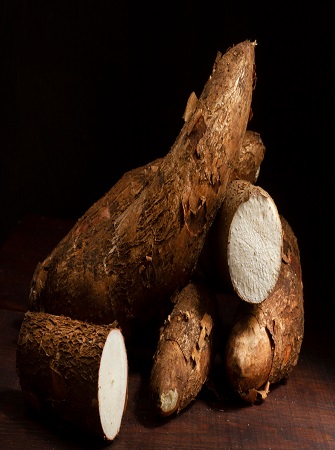
Thanks to its roots’ high starch content, cassava is a rich source of dietary energy. Its energy yield per hectare is often very high, and potentially much higher than that of cereals. In many countries of sub-Saharan Africa, it is the cheapest source of calories available. In addition, the roots contain significant amounts of vitamin C, thiamine, riboflavin and niacin. Depending on the variety, they may also contain high levels ofcyanogenic glycosides, especially in the outer layers.
Cassava Usage
Once harvested, cassava roots are peeled, then thoroughly cooked, or grated and soaked to induce fermentation in order to release the volatile cyanide gas. The mash is processed further – by drying, roasting or boiling – into coarse flour and other food products.
In some countries, cassava is also grown for its leaves, which contain up to 25 percent protein, on a dry weight basis. Sun-drying or cooking reduces the hydrogen cyanide to safe levels. Both cassava leaves and roots can be fed to farm animals, while stems can be used as firewood and a substrate for growing mushrooms.
Cassava’s versatility does not end there. Its root starch can also be used in a wide array of industries, including food manufacturing, pharmaceuticals, textiles, plywood, paper and adhesives, and as feedstock for the production of ethanol biofuel.
Cassava Global Development
Cassava’s importance in agriculture has changed dramatically. Between 1980 and 2011, the global harvested area of cassava expanded by 44%, from 13.6 million to 19.6 million hectares, which was the biggest percentage increase among the world’s five major food crops. In that same period, world cassava production more than doubled, from 124 million to 252 million tonnes. Over the past decade, growth in cassava production has accelerated
Cassava Development in Africa
Output of cassava has increased most markedly in sub-Saharan Africa, which harvested 140.9 million tonnes – more than half of the global harvest – in 2011. Between 1980 and 2000, production almost doubled, from 48.3 million to 95.3 million tonnes, thanks to a 56% increase in the harvested area and 25% growth in yields. Between 2000 to 2011, expansion of the harvested area slowed to 18%, but improvements in yields, from 8.6 tonnes to 10.8 tonnes per hectare, boosted production by almost 50%
Cassava in sub-Saharan Africa is grown mainly on small holdings by low-income farmers who make little or no use of external inputs. It is usually grown with other crops, such as maize, rice, legumes, melons, bananas and oil palm. It is still essentially a food crop – around 90% of harvested roots are destined for human consumption, while around 10% is semi-processed as on-farm animal feed.
Since 2000, cassava production has grown faster than the Africa’s population, boosting the cassava food supply to almost 60 kg per capita per year. Africans’ consumption of cassava is higher than that of any other staple food, including maize. Almost all of it is consumed as fresh roots or after processing into fermented flour products. By some estimates, urban Nigerians consume cassava at the rate of 0.2 kg per day.
The biggest gains in cassava production since 2000 have been in West Africa, where output rose by 60%, from 47 million to 76 million tonnes. Productivity has increased as countries in the subregion recognized cassava’s potential as an industrial crop that could help to diversify farmers’ incomes, earn foreign exchange and generate jobs. Growth in output was particularly strong in Nigeria and Ghana: in the space of 11 years, both countries boosted yields by 25%, to around 15 tonnes per hectare.
Cassava Trade
Sub-Saharan Africa lags behind global trends in the development of the cassava value chain. However, new uses for cassava are emerging: in commercial livestock feed, as a partial substitute for wheat flour in bread making and as an industrial raw material. In 2012, Nigeria made a strong entry into the global cassava trade when it secured an order to supply China with 1 million tonnes of dried cassava chips; the government recently announced further sales to China of 3.3 million tonnes in 2013.
Thailand dominates the export trade, shipping 6 million tonnes of dried cassava chips and starch, with a total value of $1.5 billion, in 2010. However, it faces increasing competition. Viet Nam has more than quadrupled cassava production, from 2 million to 8.5 million tonnes since 2000, and exported 1 million tonnes of dried cassava in 2010. Indonesian exports also grew, from 150 000 tonnes in 2000 to 1.4 million tonnes. In Cambodia, a fledgling export trade in dried cassava, amounting to 22, 000 tonnes in 2011, was recently boosted by orders from China for 1 million tonnes.
An important new area of cassava utilization in Asia is as feedstock for the production of biofuel – one tonne of dried chips yields about 300 litres of 96% pure ethanol. As countries seek to reduce both dependence on imported oil and greenhouse gas emissions, companies in China, Japan and the Republic of Korea are obtaining concessions for large-scale cassava plantations, mainly in Cambodia, Indonesia, Lao PDR and the Philippines, as a source of dried chips for ethanol production.
In a few countries, cassava remains first and foremost a food crop. Indonesia has the region’s highest per capita cassava food supply, of 44 kg per year, well above the regional average of 6.7 kg. Cassava is also grown mainly for food in Kerala State, India, where farmers have achieved average root yields of 24 tonnes per ha, thanks to intensiveproduction, often under irrigation.
Importance of Cassava to Farmers' Income
If anything, growth in cassava production is likely to accelerate over the current decade. Once seen as the “food of the poor”, cassava has emerged as a multipurpose crop for the 21st century – one that responds to the priorities of developing countries, to trends in the global economy and to the challenges of climate change. In brief: Rural development. Policymakers in tropical countries are recognizing the huge potential of cassava to spur rural industrial development and raise rural incomes. They look to Thailand, where increases in yields over the past two decades have boosted smallholder earnings by an estimated $650 million and lifted many cassava growers out of poverty.
In southern Brazil, cassava is a multi-million dollar industrial crop, processed in factories that employ thousands of rural people. It has been estimated that investments in cassava research and development in Africa could generate some of the highest gains in agricultural GDP.
Reasons to Grow Cassava
1. Urban food security
A major driver of production increases will be high prices of cereals on world markets, which sparked global food price inflation in 2008. In Africa, persistent urban poverty has boosted the consumption of cassava food products as consumers seek cheaper sources of calories. The United Nations’s recommendations to governments for holding down food prices is processing cassava into products that are marketable as instant foods with a long shelf-life.
Cassava could also help improve the nutrition of low-income populations – new biofortified varieties produce roots that are rich in vitamin A, iron and zinc.
2. Import substitution
Many governments have, or are considering, mandatory blending of mostly imported wheat flour with domestically produced cassava flour in bread making. Nigeria recently raised its levy on wheat flour to 100%, and will use revenue for a cassava bread development fund. It has also announced plans to substitute 10% of the maize in poultry feed with cassava grits, which will increase annual demand for cassava roots by 480, 000 tonnes. In East Africa, the animal feed industry is turning to cassava, as maize and wheat become increasingly unaffordable.
3. Renewable energy
Global output of bio-ethanol could reach 155 billion litres by 2020, up from around 100 billion litres in 2010. Cassava currently contributes to only a small part of production, but demand from China is growing rapidly following its decision to no longer use cereals to produce biofuel. Currently, 50% of China’s ethanol is derived from cassava roots and sweet potatoes, and in 2012 it was expected to produce 780 million litres of ethanol from 6 million tonnes of dried cassava.
4. New industrial uses
Worldwide, cassava is the second biggest source of starch, after maize, with production estimated at 8 million tonnes a year. However, tropical countries import each year some $80 million worth of maize starch that could be replaced by starch from locally grown cassava. In Thailand, which has earned some $4 billion from starch exports since 2000, scientists are developing a variety with root starch that rivals premium “waxy” maize starch. A recent cassava mutation offers smaller root starch granules that reduce considerably the time and energy required for ethanol production.
5. Adaptation to climate change
Another factor that favours increased cassava production is the crop’s potential to adapt well to climate change. A recent study of the impacts of climate change on major staple crops in Africa found that cassava was the least sensitive to the climatic conditions predicted in 2030, and that its suitability would actually increase in most of the 5.5 million sq km area surveyed.
For more cassava farming information and insights, check our our Cassava Farming resource center.
And if you want to know about the business of cassava farming and processing, purchase our cassava farming business plan that will show you how to farm cassava and process into flour, starch, gari and chips.
[Ed.Note: Article references: Food and Agriculture Organization (FAO); International Institute of Tropical Agriculture (IITA)]
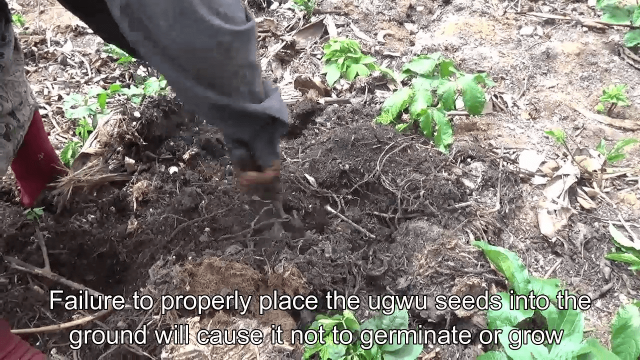

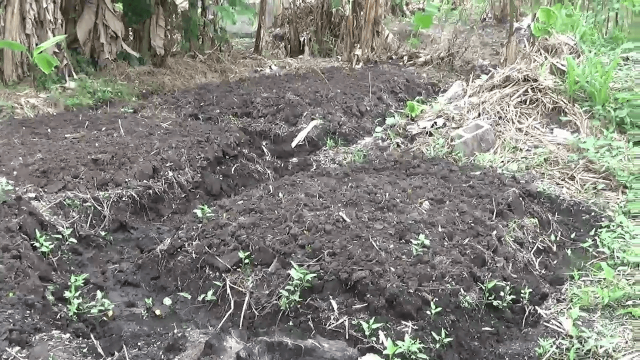
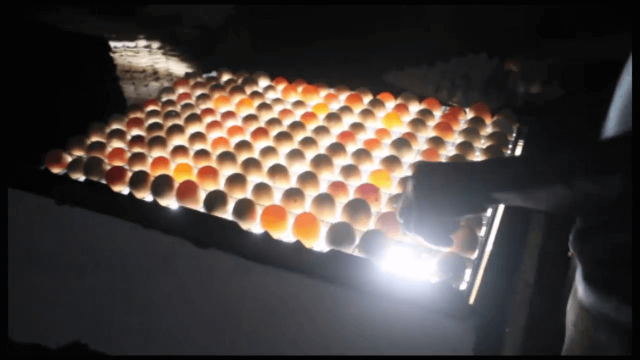
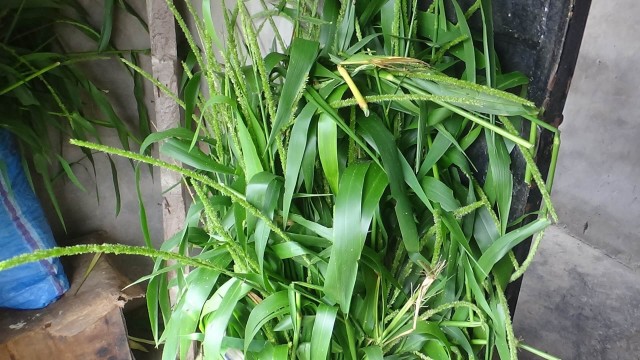
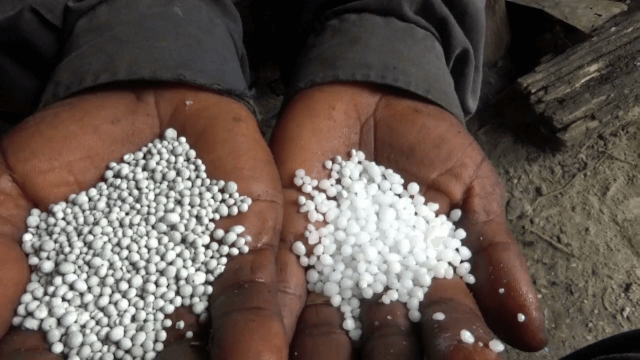
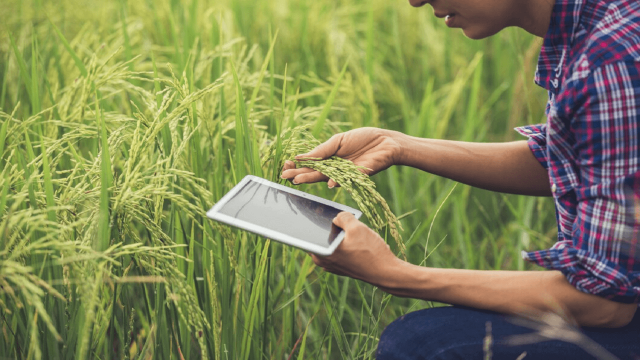


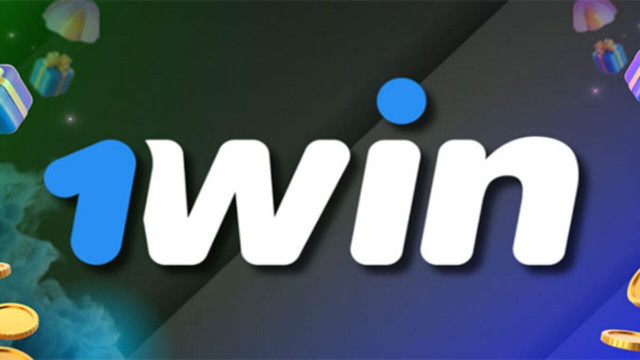


Share This Article: